“Da che io lo ricordi, ogni ingiustizia mi fa dolere l’anima come se mi conficcassero dentro qualcosa. Di ogni età conservo il ricordo di qualche ingiustizia che mi fece indignare, dilaniando il mio intimo”.
Sua sorella Erminda sottolineò queste emozioni del cuore di Eva e disse: “Tu, Eva, vedevi il cielo proprio perché non smettevi di guardare negli occhi dei poveri … Il fatto è che gli avvenimenti dell’infanzia sono come radici, che non si vedono ma che continuano ad alimentarci …”. Eva stessa scriverà, ancora, nella Razòn de mi vida: “la ricchezza della nostra terra non è che una vecchia menzogna per i suoi figli. Durante un secolo nelle campagne e nelle città argentine sono state seminate la miseria e la povertà. Il grano argentino non serviva che ad appagare i desideri di pochi privilegiati … ma i peones che seminavano e raccoglievano questo grano non avevano pane per i loro figli”. Eva, a scuola, era la prima in recitazione e, nel 1933, a quattordici anni, ebbe l’ispirazione definitiva, recitando per la prima volta in pubblico, in un lavoro, preparato dalla scuola, intitolato Viva gli studenti. Un giorno offrirono a Eva la possibilità di fare un saggio a Radio Belgrano, a Buenos Aires, e, sebbene non precisato nelle date, il racconto dell’impressione che le produsse la metropoli, la Reina del Plata, si trova riflesso nel suo libro La Razòn de mi vida: “Un giorno visitai la città per la prima volta. Arrivando scoprii che non era come io l’avevo immaginata. Improvvisamente vidi i suoi quartieri miseri e capii dalle strade e dalle case che anche in città vi erano poveri e ricchi. Quella constatazione doveva colpirmi nel profondo, perché ogni volta che rientro in città da uno dei miei viaggi all’interno del Paese, mi ritorna quel primo impatto con la sua grandezza e la sua miseria: e provo la stessa sensazione di profonda tristezza che provai allora”. All’età di 15 anni (ritornata, nel frattempo, a Junin, la città in cui Juana Ibarguren e i suoi figli erano andati ad abitare fin dal 1931), il 2 gennaio 1935, dopo essere rimasta in attesa della chiamata da Radio Belgrano che non arrivò, Eva, che non era persona da aspettare a lungo, lasciò la madre, le sorelle e prende il treno per Buenos Aires, dicendo alla sua maestra, Palmira Repetti: “Vado lo stesso a Buenos Aires. In un modo o nell’altro mi sistemerò”. Dopo quattro mesi dal suo arrivo, Eva ottenne la parte di una delle sorelle di Napoleone, in Madame Sans-Gene, di Moreau e Sardou. Nel 1937, Eva ottenne una parte in un film, Seguendos afuera, una sua foto fu pubblicata sulla rivista “Sintonia” e ebbe un ruolo in No hay su egra como la mìa. (Mia suocera è unica), trasmessa anche da Radio Splendid. Si trattava, tuttavia, ancora di briciole di teatro, di frammenti di personaggi che non consentirono a Eva di uscire dall’anonimato, di affrancarsi dallo stato di bisogno, né dalla sensazione di insicurezza e di incertezza del futuro. Il 4 giugno 1943, un colpo di stato, fomentato dal generale Arturo Rawson, destituì il presidente Ramòn J. Castillo e lo sostituì con il generale Pedro Pablo Ramirez. Questa rivoluzione si opponeva alla candidatura, patrocinata dal presidente Castillo, di Robustiano Patron Costas, che significava la continuità del potere oligarchico e del feudalesimo dei proprietari terrieri. Il colonnello Juan Domingo Peròn ( che era uno dei giovani ufficiali del Gou, ovvero Grupo Obra de Unificacìon, una di quelle conventicole militari, la cui politica era fondata principalmente sull’obiettivo di liberare l’Argentina dalla dipendenza economica inglese) assunse la direzione, con l’incarico di trasformarla in una Segreteria, del Lavoro e della Previdenza sociale. Le idee politiche di Peròn non volevano limitarsi a conseguire l’indipendenza economica dall’Inghilterra. Peròn voleva trasformare l’Argentina in una nazione “economicamente libera, socialmente giusta e politicamente sovrana”. Riunì al suo fianco, alla Segreteria, uomini come Cipriano Reyes, un sindacalista, capo della C.G.T. (Confederacion General de Trabajo); José Figuerola, che gli avrebbe redatto tutto quanto si riferiva alla riforma sociale e ai piani quinquennali; Miguel Miranda, abile economista, che Jaruteche definì “grande argentino” per il magnifico programma di riforme economiche; Atilio Bramuglia, ministro degli Affari Esteri durante la prima presidenza Peròn, il colonnello Mercante, uno dei suoi collaboratori più fedeli che nei primi anni di governo poté essere considerato il delfino di Peròn, Cereijo, presidente della Banca Centrale, che diventò ministro delle Finanze, Borlenghi, ministro degli Interni; e infine il dottor Carrillo, ministro della Sanità, gabinetto che prima non esisteva e dal quale vennero promosse importanti campagne che sfociarono in un sensibile miglioramento dell’igiene e della salute degli argentini. Durante questi primi mesi d’attività alla Segreteria, Peròn adotta così una serie di misure che faranno fare all’Argentina spettacolari balzi in avanti nel settore della sicurezza sociale. Venne stabilito il principio del salario minimo, venne data la pensione dello stato a circa due milioni di lavoratori, si crearono i tribunali del Lavoro che garantivano parità di diritti tra datori di lavoro e lavoratori nei conflitti sociali, vennero istituite le commissioni paritetiche, con lo Stato cioè in qualità di mediatore. Inoltre fu emanata un’apposita legislazione per gli incidenti sul lavoro, le malattie professionali, la tredicesima mensilità, le ferie retribuite (già da allora di quattro settimane) e la durata della settimana lavorativa. A completamento del “pacchetto” venne poi formalmente riconosciuto lo stato giuridico dei sindacati, la cui costituzione era fortemente incoraggiata, i cui mezzi e le cui strutture furono notevolmente ampliati, consolidando definitivamente la natura riformista del sindacalismo argentino, dopo le precedenti tendenze anarchiche e nichiliste. Il 15 gennaio del 1944, la città di San Juan venne quasi totalmente distrutta da un terremoto. Città già povera, subì danni per un valore di 300 milioni di pesos e fu necessario evacuare i 50.000 abitanti sopravvissuti. Peròn, attraverso la sua Segreteria, organizzò tutti i soccorsi, l’evacuazione della popolazione e la riparazione dei danni. Peròn convocò una riunione di artisti del cinema, del teatro e della radio nella sede del Consejio Deliberante, allo scopo di organizzare uno spettacolo, la celebre festa del Luna Park, per raccogliere fondi destinati ai terremotati. Eva partecipò al grande avvenimento del Luna Park, nel quale vennero raccolti 21 mila pesos e Peròn dirà che “Il mondo si evolve verso i valori spirituali che trovano un baluardo negli artisti ai quali il popolo argentino deve il suo costante progresso”. Eva incontrò Peròn a questa festa, dove i biografi dicono che abbia avuto inizio la loro storia d’amore. Peròn la ricordò così: “Aveva la pelle bianca ma, quando parlava, il volto le si infiammava. Le mani diventavano rosse a forza d’intrecciarsi le dita. Quella donna aveva del nerbo”. Peròn schierandosi dalla parte dei lavoratori, fece avanzare quell’incendio, intraprese quel “cammino nuovo”, quel “percorso difficile”, quella “rivoluzione” di cui parlava Evita. Quella Rivoluzione Nazionale, i cui punti fondamentali erano: nazionalizzazione dei servizi pubblici, previdenza sociale, sovranità popolare, riforma agraria e organizzazione del lavoro. Sfidando così gli “uomini comuni” dell’oligarchia, gli “eterni nemici di tutto ciò che è nuovo, di ogni progresso, di ogni idea straordinaria”. Già il 16 giugno 1945 gli industriali avevano inviato un esposto al governo con il quale esigevano la rettifica della sua politica sociale. Naturalmente i sindacati reagirono in difesa della Segreteria. Nello scontro, le due forze si misurarono sullo steso terreno: la piazza. Cominciarono gli industriali con la Marcia della Costituzione e della Libertà che ebbe luogo il 17 settembre 1945. il governo dichiarò lo stato d’assedio e, per reazione, gli studenti occuparono numerose facoltà. Peròn affermò che era “naturale” che contro le riforme si fossero “sollevate “le forze vive” che altri chiamano “i pesi morti”. Ma chi erano queste “forze vive”? “La Borsa: cinquecento persone che vivono trafficando su quanto producono gli altri; o l’Unione degli Industriali: dodici signori che, come ben si sa, vivono imponendo la loro dittatura al Paese”. L’8 ottobre, un gruppo di allievi della Scuola Superiore di Guerra chiese al generale di brigata Eduardo Jorge Avalos, comandante della guarnigione di Campo de Mayo, di togliere a Peròn qualsiasi incarico. La richiesta arrivò al presidente Farrell, il quale si rese conto che, non accogliendola, avrebbe provocato inevitabilmente un sollevamento militare. Gli Stati Uniti, tramite l’ambasciatore Spruille Braden, diedero il loro appoggio a questa coalizione di industriali, studenti e militari. Ai loro occhi Però rappresentava un militare troppo rivoluzionario che esasperava l’atteggiamento dell’oligarchia. Peròn presentò, dunque, le proprie dimissioni scrivendo poche parole al presidente Farrell per comunicargli che si dimetteva “dalle cariche conferitegli di Vice – Presidente, di Ministro della Guerra e di Segretario di Stato al Lavoro e alla Previdenza sociale”. Il 10 ottobre Peròn rivolse un saluto d’addio ai 50.000 operai che lo acclamavano dinanzi alla sede della Segreteria: “Se la rivoluzione si fosse limitata a permettere comizi liberi avrebbe favorito esclusivamente un partito politico. Questo non poté, non può e non potrà essere mai il fine esclusivo della rivoluzione. E’ quanto avrebbero voluto alcuni politici per poter tornare; ma la rivoluzione incarna le riforme fondamentali che si è proposta di realizzare a livello economico, politico e sociale. Questa trilogia rappresenta la conquista della rivoluzione, che è ancora in marcia, e quali che siano gli avvenimenti, essa non potrà mai essere svilita nel suo significato più profondo. L’opera compiuta sinora è di una consistenza tale che non cederà di fronte a nulla, e viene riconosciuta non da quanti la denigrano, ma dagli operai che la sentono. Quest’opera sociale che soltanto i lavoratori apprezzano nel suo vero valore, dev’essere difesa da essi in tutti i campi. Ho approvato anche in decreto di straordinaria importanza per i lavoratori, riguardante gli aumenti salariali, l’instaurazione del salario mobile, cosa vitale e basilare, e la partecipazione ai profitti. Chiedo a tutti voli che portate nel cuore la bandiera delle rivendicazioni, di pensare ogni giorno della vostra vita che dobbiamo continuare a lottare ininterrottamente per quelle conquiste che sono gli obiettivi che porteranno la nostra repubblica alla testa delle nazioni del mondo. Ricordate e tenete ben impresso questo motto: “da casa al lavoro e dal lavoro a casa”, perché con esso vinceremo. Concludendo, non vi dico addio. Vi dico invece hasta siempre perché da oggi in poi starò con voi, adesso più che mai. E, infine, accettate questa raccomandazione che vi fa la Segreteria del “Lavoro e Previdenza”: unitevi e difendetela perché è la vostra e la nostra opera”. Quando un gruppo di ufficiali della Marina arrestò il colonnello e lo condusse a bordo della cannoniera Independencia, Eva si rivolse alla piazza e questa fu la sua prima importante azione politica. Il momento era storico ed Eva si lanciò nella lotta (“Bussai di porta in porta. In quel doloroso e interminabile peregrinare, sentivo ardere nel mio cuore la fiamma di un incendio, che annullava la mia assoluta piccolezza”), percorse in macchina i quartieri popolari chiamando gli operai allo sciopero (“A mano a mano che scendevo dai quartieri orgogliosi e ricchi verso quelli poveri e umili le porte si aprivano generosamente, con più cordialità”), partecipando ai preparativi del movimento – guidato da capi sindacali come Cipriano Reyes, Luis Gay e Luis Monzalvo – e al presidente Farrell non rimase che far rientrare Peròn dal confino nell’isola di Martin Garcia. Peròn apparve al balcone della Casa Rosada alle 11,10 di sera del 17 ottobre 1945 e nella moltitudine di operai, che aveva atteso per l’intera giornata scoppiò un’oceanica e interminabile ovazione, un solo grido si innalzò all’unisono dalle trecentomila bocche dei descamisados: “Peròn Presidente!”, “Peròn Presidente!”. Solo due mesi dopo Peròn ed Eva si sposarono con il matrimonio sia civile (il 22 ottobre 1945 a Junin) che religioso (il 10 dicembre a La Plata). Per Evita (così amava essere chiamata dal popolo) “descamisados” sarà la definizione – cito La Razòn de mi vida – che più si addice al peronista militante: “Sono descamisados tutti coloro che si trovavano nella Plaza de Mayo il 17 ottobre 1945; quelli che hanno attraversato a nuoto il Riachuelo provenienti da Avellaneda, dalla Boca e dalla provincia di Buenos Aires, quelli che in colonne allegre, ma disposti a tutto, anche alla morte, quel giorno indimenticabile sono sfilati per l’Avenida de Mayo”. “Ciò che spinse le masse verso Peròn – scrisse Jaruteche – non fu il risentimento, fu la speranza”. La situazione, nell’ottobre 1945, era perciò allarmante per l’oligarchia che costituiva un gruppo di enorme influenza economica, che dirigeva la vita politica del paese, erigendo barriere insuperabili a livello di comunicazione sociale. Venne costituito un fronte unico chiamato Uniòn Democratica (fronte vasto ed eterogeneo che comprendeva radicali, socialisti, comunisti, demo – progressisti e contava sull’appoggio dell’unione industriali), sotto la protezione dell’allora ambasciatore americano Spruille Braden, il quale era all’origine del Libro blu, pubblicato dal Dipartimento di Stato, che denunciava il nazismo di Peròn. Manovra particolarmente infelice per un diplomatico, la cui prima regola di condotta dovrebbe essere quella di non ingerirsi negli affari interni del paese di accreditamento. Peròn seppe, infatti, sfruttare questa gaffe e riuscì a porre il nazionalismo dei suoi compatrioti di fronte all’alternativa efficacemente espressa dalla formula “Braden o Peròn”.
Peròn, d’accordo con Cipriano Reyes, capo della C.G.T., creò il Partito Laburista Argentino, che consisteva in un “raggruppamento di lavoratori urbani e rurali il scopo è di battersi per l’emancipazione politica e sociale delle classi lavoratrici, migliorandone le condizioni di lavoro, elevandone il tenore di vita e per l’instaurazione nel paese della democrazia integrale”, cioè una “democrazia sociale”, derivante dal superamento di quella “democrazia liberale” che, in realtà, era espressione di élite e di potentati economici. Non a caso uno dei presidenti che successero a Peròn, Arturo Frondizi, sottolineò che l’unica forza reale e concreta che abbia cambiato il volto dell’Argentina è stato il peronismo e che “appartiene ad una distorsione europea l’idea che il peronismo non sia stata una forma democratica”. Nel programma vennero riprese le tematiche sui cui Peròn aveva già basato la sua azione di Segretario del Lavoro e della Previdenza sociale, e, in particolare, partecipazione degli operai agli utili dell’impresa, lotta alla speculazione, salario minimo garantito e indicizzato, indennità di disoccupazione, riduzione dell’orario di lavoro, lotta contro il caro – vita, nazionalizzazione dei mezzi di produzione, ridimensionamento del grande latifondo, con distribuzione della terra a piccole cooperative, controllo della grandi holding inglesi e americane presenti nel paese. Venne aggiunto, infine, su intelligente ispirazione di Evita, un ulteriore obiettivo, d realizzare in tempi brevi: l’estensione dei diritti politici alle donne, una misura che del rivoluzionario in un paese dove tradizionalmente l’elemento femminile viene tenuto ben lontano dalla politica e dalle grandi questioni economiche e sociali. Se gli uomini delusero Peròn, sua moglie e il suo Paese, l’Argentina, gli furono fedeli in modo difficilmente superabile. E per l’Argentina, per arricchirla, propose la creazione di grandi capitali che fossero frutto del lavoro e non della speculazione. E gli argentini scelsero naturalmente Peròn, il quale, il 24 febbraio 1946, con il fedele e scaltro Hortensio Quijano (un membro del partito radicale, che era stato ministro degli Interni e aveva avuto un ruolo decisivo negli avvenimenti del settembre e ottobre 1945) in qualità di candidato alla vicepresidenza, ottenne 1.479.511 voti contro 1.201.822 di Tamborini e di Mosca, notabili appartenenti all’ Uniòn Democratica, dando come risultato la vittoria peronista. Il trionfo ottenuto nelle elezioni aprì le porte della Presidenza a Peròn che assunse il potere il 4 giugno 1946. Evita, da allora, assunse un ruolo fondamentale. Non volle seguire “l’antico modello della moglie del presidente”. E’ chiaro, insomma, che Evita non si lasciò rinserrare dall’oligarchia nel ruolo di consorte del presidente della repubblica. Disse chiaramente nel suo libro La Razòn de mi vida: “Alcuni giorni dell’anno ero Eva Peròn [la moglie cioè del Presidente] e lo facevo molto bene. Tutto il resto del tempo ero Evita, l’ambasciatrice del popolo presso Peròn. Compito difficilissimo e richiedente sforzi continui … Se mi domandaste che cosa preferisco, la mia risposta sarebbe immediata e spontanea: mi piace di più il nome che mi dà il popolo. Quando un bambino mi dice Evita, mi sento madre di tutti i bambini, di tutti deboli e i diseredati della terra. Quando un operaio mi dice Evita mi sento compagna di tutti gli uomini che lavorano nel mio paese e nel mondo intero. Quando una donna della mia patria mi dice Evita mi sembra di essere sorella di quella e di tutte le donne dell’umanità …”. Evita, pur erssendo una donna di temperamento, che non si fermava né davanti alle parole, né davanti ai fatti, conosceva, tuttavia, i limiti della sua sfera d’azione che sapeva di non dover superare, e l’armonia fra i due fu, grazie al tatto di lei, costante fino alla fine. Peròn mantenne per sé il comando delle Forze Armate, la direzione della diplomazia, la direzione dell’economia e lasciò ad Evita la Segreteria del Lavoro, dove sbrigava le questioni coi dirigenti sindacali e incontrava i descamisados; faceva numerose visite e presenziava a inaugurazioni. Dell’equipe di Evita facevano parte Oscar Nicolini, nominato nel 1945 ministro delle Comunicazioni, e José Espejo, diventato, nel 1948, segretario della C.G.T., dopo l’uscita di scena di Luis Gay e di Aurelio Hernàndez. Nel 1947 venne intrapresa l’impresa più spettacolare: il viaggio in Europa di Evita. Il 6 giugno 1947 un quadrimotore Douglas DC4 dell’Iberia, messo a disposizione dalle autorità spagnole, decollò dall’aeroporto di Buenos Aires per portare in Spagna Evita Peròn. Il viaggio in Europa fu l’opportunità di presentare Evita a livello internazionale: con il fascino, la sua giovinezza, la vitalità, sarebbe stata certamente in grado di conquistare le simpatie e i cuori della vecchia classe dirigente europea, facendo uscire il suo paese dallo stato d’emarginazione nel quale l’Argentina si trovava a causa della volontà di liberarsi dalla dipendenza, sia economica che politica, dalla Gran Bretagna e degli Stati Uniti, nazionalizzando la rete ferroviaria (posseduta, fin dal 1907, da società britanniche) e quella telefonica (detenuta fin dagli anni ’20 dalla multinazionale americana ITT). Peròn volle mantenere fede alle promesse elettorali, realizzando queste prime riforme, approfittando di una congiuntura internazionale favorevole all’Argentina. Gli indicatori macro – economici prospettavano, infatti, un futuro di benessere e di sviluppo: la ricomposizione degli equilibri internazionali nel dopoguerra favoriva la collocazione delle esportazioni argentine nel mercato mondiale; la bilancia commerciale era in forte attivo ed il paese disponeva di ingenti risorse d’oro e di valuta estera; la situazione occupazione era buona; inoltre la scelta di una crescita basata sui comparti leggeri dell’industria, puntando cioè su un settore che produceva beni per il mercato anziché capitali, s’intendeva non penalizzare i consumi e, soprattutto, utilizzare il settore industriale come strumento di assorbimento della disoccupazione (se nel 1943 le persone occupate nell’industria erano 488.700, nel 1949 raggiungevano la cifra di 955.900, cioè i posti di lavoro erano aumentati di circa il 96%) e di redistribuzione del reddito in favore delle classi lavoratrici urbane. Infatti, il soli tre anni dal 1946 al 1949, il reddito reale aumentò di più del 40%, trainando i consumi interni. Evita arrivò in Spagna domenica 8 giugno, alle sette del pomeriggio, accolta dal generalissimo Franco, affiancato da sua moglie, dona Carmen Polo de Franco e da sua figlia, Carmen Franco Polo. All’aeroporto c’erano trecentomila madrileni in delirio che gridavano il suo nome. Un po’ più in là, un gruppo di ragazze della Falange agitava i fazzoletti. Dappertutto fiori e bandiere spagnole, rosso – giallo – rosso, e argentina azzurro – bianco – azzurro. Ricevuta dalla mani del generalissimo Franco la Grande Croce d’Isabella la Cattolica, che metterà in occasione del colloquio con Pio XII., Evita pronunziò, lunedì 9 giugno, nella piazza d’Oriente, un discorso breve ma efficace, in cui parlò solo di questioni sociali e di lavoratori, dicendo ciò che sentivano nella nuova Argentina, cercando di trasmettere la profonda aspirazione a una società nuova, nella quale “non vi siano né troppi ricchi né troppi poveri”, e la preoccupazione di rendere ogni giorno più concreta e reale, per ogni uomo e per ogni famiglia , la sicurezza della vita e la speranza di un costante miglioramento. Evita disse di essere venuta in Spagna non per formare “assi”, ma per tendere “arcobaleni di pace”, a portare un messaggio di speranza al Vecchio Mondo e anche un messaggio d’amore a tutti gli spagnoli da parte dei descamisados argentini. Più tardi la stessa Evita definirà questo ruolo con un’immagine altrettanto forte: “Sono il ponte che collega Peròn con il popolo. Attraversatemi!”. Il suo amore per i bisognosi la portò a voler visitare misere catapecchie dove vivevano donne malate e uomini senza lavoro. Evita, recandosi nelle principali località del paese, tenne una serie impressionante di interventi (a Madrid, in una scuola di orientamento professionale, a Granata, in una fabbrica, a Vigo, nella Casa del Pescatore) per esaltare l’instaurazione di “un ordine basato sulla giustizia sociale secondo i principi proclamati dal presidente Peròn, dove tutti possano godere di una giusta retribuzione; dove l’operaio possa vivere in condizioni di lavoro dignitose e possa conservare la sua salute, godere di benessere fisico e spirituale, proteggere la propria famiglia, innalzare il suo livello economico” affinché “nessuno soffra e nessuno si veda assediato da una terribile miseria”. Il 26 giugno 1947 lasciò la Spagna esclamando “Addio Spagna mia”. Purtroppo non altrettanto bene andarono le cose in Italia, Francia, Svizzera e Inghilterra: a Roma, l’ambasciata argentina era situata in piazza dell’Esquilino, di fronte alla sede di un sindacato italiano di ispirazione comunista e l’arrivo di Evita venne accolto da urla, parolacce e insulti terribili; a Parigi, la visita, pur essendo caratterizzata dalla migliore accoglienza ufficiale (sia da parte del presidente della Repubblica Vincent Auriol, che dal ministro degli Affari Esteri Georges Bidault), venne ridimensionata da numerosi ricevimenti privati, che mostrarono, come le autorità francesi si sforzassero di togliere ogni significato politico di “avvicinamento” tra i due paesi; a Berna un giovane svizzero aggredì Evita, lanciando dei sassi contro la sua macchina, rompendo il parabrezza e ferendo l’autista; la visita a Londra, fu annullata, perché la corte britannica si rifiutò di riceverla, proponendo, invece, che la visita avesse carattere privato. Proprio durante il viaggio di sua moglie in Europa, Peròn lanciò un messaggio di pace al mondo, affermando la sua teoria politica della “terza posizione”, elemento di stabilità, all’interno, tra lo sfruttamento capitalista e la disumanizzazione marxista e fattore di equilibrio, all’esterno, tra i due blocchi emersi dalla logica di Yalta: “… in questo momento è in corso una lotta tra il comunismo e il capitalismo … noi non vogliamo essere né contro l’uno né contro l’altro. Noi realizziamo nel nostro paese la dottrina dell’equilibrio e dell’armonia tra l’individuo e la collettività attraverso la giustizia sociale che rende dignità al lavoro, che armonizza il capitale, che eleva la cultura sociale … di modo che il noi sociale si realizza e si perfeziona attraverso l’io dell’individuo considerato come un essere umano …”. Infatti, un paese come la nuova Argentina era in grado di sfamare, con carne e grano, l’intero continente europeo lacerato e disorientato dalla recente guerra: “L’unico rischio che correrà il mondo in futuro è la fame ma noi abbiamo il cibo dei nostri campi”, ripeteva spesso Peròn. La fornitura di prodotti alimentari ai paesi belligeranti aveva consentito di accumulare già durante la guerra ingenti riserve in moneta estera. Inoltre le difficoltà di pagamento e di trasferimento delle valute intervenute nel periodo bellico, fecero sì che l’Argentina vantasse crediti non incassati nei confronti di diverse nazioni. Tra le quali c’era proprio la Gran Bretagna, che ancora nel 1946 non aveva saldato un debito di 150 milioni di sterline.
Deciso a portare avanti il proprio programma sociale e politico, Peròn adottò misure tipicamente keynesiane: : sussidio al credito, politica dei redditi, espansione della spesa pubblica e, di conseguenza, del deficit statale. Peròn giustificò, nell’ottobre del 1951, tale strategia con queste parole: “L’Argentina giustizialista dirige tutti i suoi sforzi verso al’affermazione della sovranità nazionale, cercando le basi per il sostenimento in una volontà popolare nitida ed internamente inattaccabile”. Infatti, la politica economica peronista aveva tra i propri obiettivi prioritari un rapido recupero di risorse che consentisse di realizzare una decisa redistribuzione del reddito in favore dei ceti urbani. Le cifre si riferivano al totale delle ore lavorative di un operaio nel 1949 che, messe a confronto con quelle del 1943, rivelavano un aumento del 16,6% mentre la retribuzione era superiore, rispetto a quella del 1943, del 388,5%. Peròn rafforzò la politica d’intervento diretto dello stato in economia con la costruzione di centrali idroelettriche e gasdotti, con l’ammodernamento delle reti di trasporto urbano ed extra – urbano, con l’istituzione della compagnia aerea di bandiera (le “Aerolìneas Argentinas”) e della flotta mercantile nazionale. Inoltre lo stato diventò anche produttore, gestendo con funzionari propri (spesso ufficiali e tecnici delle forze armate) l’industria bellica e le imprese del gruppo DINIE, costituito da società confiscate ai proprietari tedeschi all’indomani dell’entrata in guerra argentina, dichiarata il 27 marzo 1945, al fianco degli Alleati. Ma l’intervento che più d’ogni altro sancì la volontà innovatrice del nuovo governo fu la nazionalizzazione del Banco Central, che diventò la chiave di volta della politica economica di Peròn, tramite il controllo del Banco Industrial e dell’Instituto Argentino de Promocìon del Intercambio (IAPI). Quest’ultimo, cui venne assegnato il monpolio del commercio con l’estero, acquistava direttamente dai produttori a prezzo amministrato i beni destinati all’esportazione – tipicamente cereali e prodotti di macellazione – , rivendendoli a prezzo di mercato sulle piazze internazionali e trasferendo i profitti ottenuti al Banco Industrial, che li avrebbe trasformati in capitali da assegnare in prestito a tassi iper – vantaggiosi al settore industriale per approvvigionarsi di materie prime, quali combustibile, macchinari e pezzi di ricambio. Tra il 1945 e il 1948 il Pil aumentò del 29%, trainato dalla crescita dell’industria leggera (tessile e alimentare in primis, impoverendo però il settore agricolo, cioè quello che fu il motore stesso dello sviluppo), che fece registrare un picco del 12,1% nel 1947.
Una delle riforme più importanti e popolari intraprese da Peròn fu la concessione alle donne del diritto di voto. La legge 13010 venne approvata il 9 settembre da una storica seduta del Parlamento, davanti al quale Peròn spiegò che “il riconoscimento dei diritti politici della donna costituisce un atto di giustizia in quanto la donna coopera con i suoi sforzi e con la stessa energia dell’uomo alla difesa degli interessi e dei diritti collettivi sacrificando spesso anche la vita, la famiglia e la serenità; sarebbe quindi inconcepibile che rimanesse esclusa dalla difesa dei suoi stessi diritti e interessi”. Da parte sua Evita , il 23 settembre 1947, giorno della promulgazione della legge, completò così il pensiero del marito: “Mi tremano le mani al contatto dell’alloro che sancisce la vittoria, perché qui, sorelle mie, in pochi articoli concentrati è riassunta una lunga storia di lotte, di scontri e di speranze …”.
“Noi donne siamo le missionarie della pace. I sacrifici e le lotte sono riusciti finora solo a raddoppiare la nostra fede. Innalziamo, tutte assieme, questa fede e con essa illuminiamo il sentiero del nostro destino. E’un destino grande, appassionato e felice. Per farlo nostro e meritarlo, disponiamo di tre elementi incorruttibili e inalterabili: una fiducia illimitata in dio e nella sua infinita giustizia; una Patria incomparabile da amare con passione e un leader che il destino ha forgiato per affrontare vittoriosamente i problemi: il generale Peròn. Col voto e con lui contribuiremo alla perfezione della democrazia argentina”.
L’8 luglio 1949 fu creata ufficialmente la Fondazione di Aiuto Sociale Maria Eva Duarte de Peròn, istituzione la cui responsabilità “compete unicamente e esclusivamente alla sua fondatrice”, che rappresentò un concetto di giustizia sociale molto lontano dal modo d’intendere la carità a parte delle dame dell’oligarchia: era regolata da uno statuto in accordo con le norme stabilite dal Ministero della Giustizia. Erano membri fissi del suo Consiglio Direttivo il Ministro delle Finanze e il segretario generale della C.G.T. i consiglieri erano nominati per metà dalla fondazione, e i restanti da rappresentanti operai del sindacato. Mille scuole e diciotto pensionati furono costruiti in provincia. Gli alunni, circa tremila, venivano da famiglie che vivevano nei ranchos de adobe e dormivano per terra. Evita fece costruire anche dei quartieri per studenti a Còrdoba e a Mendoza. Ma le sue grandi passioni erano il Quartiere degli studenti di Buenos Aires, che occupava cinque blocchi di case, e la Città dei bambini Amanda Allen (un’infermiera della fondazione, morta in un incidente aereo mentre rientrava in Argentina dopo essere andata in soccorso delle vittime di un terremoto che aveva scosso l’Ecuador), inaugurata il 14 luglio 1949. Oltre alle colonie di vacanza create a Ezeiza, vicino a Buenos Aires, Evita fece costruire delle “unità turistiche” a Chapadmalal (non lontano da Mar del Plata), a Uspallata (Mendoza) e a Embalse Rìo Tersero (Còrdoba). Ognuna di queste comprendeva un centro alberghiero che poteva ospitare da tremila a quattromila persone, operai, pensionati, studenti. Soltanto a Buenos Aires la fondazione aveva costruito quattro policlinici. Altri centri simili furono inaugurati in nove province. A Termas de Reyes (Jujuy, nel Nord – ovest del paese) e a Ramos Mejia (nella periferia di Buenos Aires) furono costruite delle cliniche pediatriche. Purtroppo l’ospedale dei bambini di Buenos Aires e un altro a Corrientes, sul litorale argentino, furono abbandonati dopo la caduta del peronismo. Nell’agosto 1948 il ministero del Lavoro proclamò solennemente la Dichiarazione dei diritti degli anziani. Nel luglio 1950, al teatro Colòn, Evita pianse per la gioia di poter assicurare una vecchiaia serena agli anziani argenti argentini quando diede le prime mille pensioni ad altrettanti anziani. La casa di riposo di Burzaco, vicino a Buenos Aires si sviluppava su due ettari e poteva accogliere duecento persone in un ambiente caloroso, tanto che Evita in La Razòn de mi vida: (che pure scrisse quando la sua malattia era ormai una realtà) sognava del giorno in cui, forse, lei stessa avrebbe potuto abitarvi. E, ancora, furono creati altri centri che accoglievano donne senza lavoro e senza domicilio, finché non si fossero trovati loro l’uno e l’altro. Ma il fiore all’occhiello di Evita era il Pensionato dell’impiegata, sull’Avenida de Mayo, che accolse cinquecento donne venute a lavorare nella capitale. Tutte opere necessarie per accrescere il legame comunitario e solidaristico della gente. Questo fu un merito fondamentale della politica di Evita. La sua opera non era soltanto un impegno a favore dei più deboli, dei suoi descamisados , ma la volontà precisa di radicare nel profondo del suo popolo un legame molto forte, un senso di appartenenza che travalicasse ogni rivendicazione sociale, uno spirito di unione talmente forte da trasformare la popolazione argentina in un popolo unito: “Siamo un popolo che ha in mano il timone del proprio destino”, disse Evita “che è grande perché è popolare, che è degno perché è giustizialista , he è nobile perché è argentino e che è sublime perché c’è Peròn. E’ stato un miracolo che ha avuto conseguenze enormi a livello economico, politico e sociale. In primo luogo ha creato una giustizia sociale che ha riordinato i criteri distributivi, mobilitando le masse a favore delle grandi battaglie per l’indipendenza economica nazionale … Questa rinascita del nostro spirito che l’oligarchia non ha potuto vendere come ha venduto le nostre fonti di ricchezza, ha portato con sé la suprema dignità del lavoro e la definitiva liberazione dell’uomo. Abbiamo abbattuto con gioia i cupi orfanotrofi per innalzare le pareti chiare ed allegre della “Città dell’Infanzia”, dei convitti, dei policlinici, delle case – parcheggio, della casa dell’impiegata e dell’anziano, della “Città dello Studente”, delle città universitarie, delle colonie per le vacanze, delle case per la madre, delle scuole e delle mense popolari. On l scopa giustizialista abbiamo fatto piazza pulita delle capanne e delle baracche e abbiamo costruito quartieri operai, necessari per la dignità sociale delle nostre masse lavoratrici. Abbiamo esiliato l’elemosina per esaltare la solidarietà come criterio di giustizia. E continuiamo gioiosamente nella lotta perché il repmio è troppo grande e troppo bello per rinunciarvi. Questo premio è la felicità, il benessere e l’avvenire del nostro amato popolo descamisado”.
Il 26 luglio del 1949, mille donne si radunarono al Teatro Nazionale Cervantes di Buenos Aires dove si tenne il Primo Congresso del Movimento Peronista Femminile. Con la fondazione di questo movimento riemerse con forza la volontà di occuparsi delle donne, dei loro problemi, di seguirle da vicino. Questo rapporto, però, si è evoluta, è diventato politico. Evita volle rivoluzionare anche il ruolo delle donne nella vita politica argentina. Disse Evita a quel pubblico femminile: “le donne sono state doppiamente vittime di tutte le ingiustizie. In famiglia soffrivano più d’ogni altro membro perché si assumevano tutta la miseria, la desolazione e sacrifici per evitarli ai propri cari. Portate in fabbrica, subivano tutta la prepotenza padronale. Tormentate dalla sofferenza, stroncate dai bisogni, stordite dalle giornate estenuanti e dalle pochissime ore destinate al riposo, distrutte dai lavori domestici, le nostre compagne di allora – che in molti paesi del mondo sono le nostre compagne di oggi, anche se è vergognoso ricordarlo – non trovarono altra soluzione se non rassegnarsi di fronte all’accumulazione sempre maggiore degli insensibili e bastardi capitalisti. Come se non bastasse, il destino riservava loro un’altra sofferenza. Scoperte dall’industriale come forza – lavoro meno cara, le donne che lavorano diventano le concorrenti dei fratelli lavoratori, compiendo – costrette dalle circostanze e dal bisogno di mandare avanti la famiglia – i loro stessi lavori pur ricevendo un salario inferiore”. Nel 1949, quando le ingenti risorse valutarie accumulate durante la guerra andarono esaurendosi, la favorevole congiuntura esterna in cui mosse i suoi primi passi lo stato peronista cominciò ad invertirsi. La bilancia commerciale, dopo quattro anni consecutivi di surplus, fece registrare un deficit di 160 milioni di dollari, dovuto principalmente al ritorno alla normalità dei prezzi agricoli e della carne; lo sviluppo dell’industria leggera, inoltre, rese il paese sempre più dipendente da materie prime e semi – lavorati esteri, cosa che comportò l’ascesa dei costi di produzione e dei prezzi al consumo dei prodotti. La conseguenze ultime di questo processo fu il riaccendersi dell’inflazione, dal 13% del 1947 al 29% nel 1949. Per spiegare che il governo aveva la possibilità d’inaugurare una politica di austerità, davanti ad un comitato di 300 persone, in maggioranza donne, che, il 29 settembre 1950, fece visita a Peròn protestando contro il carovita e chiedendo misure contro gli speculatori, Peròn, ricorrendo a un’immagine forte, disse: “Se il governo volesse deflazionare lo otterrebbe in una settimana. Con le ferrovie abbiamo comprato 23.000 proprietà. Basterebbe venderle, raccogliere il denaro, portarlo alla Caja de la Conversiòn e bruciarlo, in tal modo la circolazione diminuirebbe di circa il 39, 40 e 50%. Ma dopo, chi vedrebbe più un peso? Chi troverebbe più un peso dopo aver rarefatto in questo modo i mezzi di pagamento?”.
Il 2 agosto 1951, una folla di duecento sindacalisti della C.G.T. chiesero a Peròn di accettare la candidatura alla rielezione presidenziale ed espressero il “vivo desiderio” che Evita fosse candidata alla vicepresidenza. Il 22 agosto fu la data fissata per annunciare la candidatura di Evita. Ma ciò non avvenne, l’esercito si oppose perché se Evita fosse stata eletta vicepresidente e se Peròn fosse morto prima di lei, Evita avrebbe preso il suo posto alla presidenza dell’Argentina e, dunque, al comando delle forze armate, come fece vent’anni dopo Isabelita Peròn. Il 31 agosto, Evita rinunciò alla candidatura alla vicepresidenza: “Ho solo un’ambizione personale, che il giorno in cui si scriverà il capitolo meraviglioso della storia di Peròn, di me si dica questo: c’era, al fianco di Peròn, una donna che si era dedicata a trasmettergli le speranze del popolo. Di questa donna si sa soltanto che il popolo la chiamava con amore Evita”. E un mese dopo questo messaggio radiofonico, Evita si mise a letto e comiciò a morire. E il paese stava morendo assieme a lei. il 1952 fu l’anno in cui la crisi raggiunse il suo culmine, anche per effetto delle avverse condizioni climatiche: la produzione agricola risultò del 15% inferiore all’anno precedente, il Pil calò del 6%, il tasso di inflazione sfiorò il 50%, mentre il salario reale diminuì tra il 1948 ed il ’52 di circa il 20%. Il 28 settembre 1951, proprio mentre stavano facendo a Evita una trasfusione di sangue data la sua estrema debolezza, il generale Benjamìn Menéndez si mise alla testa di un’insurrezione, che sarà facilmente domata. tesa a far crollare il governo peronista, ma le cui conseguenze matureranno nel 1955, il 16 settembre, con la Revoluciòn libertadora, diretta dal generale Lonardi, che pose fine al governo di Peròn. Le elezioni dell’11 novembre 1951 segnarono per il Partito Peronista (frutto della fusione tra il Partido Laburista, la Unión Cívica Radical Junta Renovadora e il Partido Independiente di Alberto Tessaire, che raggruppava i conservatori che appoggiavano Peròn) un vero trionfo. Peròn venne eletto per la seconda volta con 4.652.000 voti contro i 2.358.000 del suo avversario, Ricardo Balbin della Unión Cívica Radical. Un margine notevolmente superiore a quello della prima elezione che consentì ai peronisti di conquistare tutti i seggi del Senato e centrotrentacinque dei centoquarantanove seggi della Camera. Non bisogna poi dimenticare che, per la prima volta, votarono anche 3.816.654 donne, i cui suffragi andarono all’unico partito, cioè a quello peronista, che inserì delle donne nelle sue liste. Alla fine risultarono elette ventitre deputate e sei senatrici.
Il 3 novembre 1951 Evita fu ricoverata al policlinico Presidente Peròn, dove il ginecologo Humberto Dionisi le diagnosticò un carcinoma. All’inizio di novembre, il chirurgo George Pack, specialista del Memorial Cancer Hospital di New York, procedette a un’isterectomia totale. La vita di Evita si stava spegnendo, le restavano solo alcune gocce di vita e le offrì il 1° maggio, in un discorso carico di accenti di incredibile bellezza, l’ultima volta che Evita parlò in pubblico, sorretta dal marito sul balcone della Casa Rosada. “Miei cari descamisados. Ancora una volta siamo qui riuniti, lavoratori e donne del popolo; ancora una volta ci ritroviamo, noi descamisados, in questa storica piazza del 17 ottobre 1945 per dare la risposta al leader del popolo che questa mattina, a conclusione del suo messaggio, ha detto: “Chi vuole ascoltare, ascolti; chi vuole seguire, segua”. Ed è questa la risposta, o mio generale. E’ il popolo lavoratore, è il popolo umile della Patria che qui e in tutto il Paese si è levato in piedi ed è pronto a seguire Peròn, il leader del popolo, il leader dell’umanità, che ha innalzato la bandiera della redenzione e della giustizia delle masse lavoratrici; esso lo seguirà contro l’oppressione dei traditori interni ed esterni, che, nell’oscurità della notte, vogliono iniettare il loro veleno di vipere nell’anima nel corpo di Peròn, che è l’anima e il corpo stesso della Patria. Ma non ci riusciranno, così come l’invidia dei rospi non è riuscita a far tacere il canto del usignoli e le vipere non hanno impedito il volo dei condor”.
“Io chiedo a Dio di non permettere che degli insensati alzino la mano contro Peròn, perché guai a quel giorno! Quel giorno, mio generale, io marcerò alla testa dei descamisados per non lasciare interno nemmeno un sasso che non sia peronista. Noi non ci lasceremo schiacciare dallo stivale oligarca e traditore dei “vendipatria” che hanno sfruttato la classe lavoratrice. Noi non ci lasceremo più sfruttare da quelli che, vendutisi per quattro soldi, servono i padroni stranieri e consegnano il popolo della loro Patria con la stessa tranquillità con cui hanno venduto il loro Paese e le loro coscienze”.
“Ma noi siamo il popolo, e io so che il popolo sta all’erta, siamo invincibili, perché noi siamo la Patria”.
E’ una dichiarazione di guerra, ma Evita, la grande lottatrice era colpita a morte.
Evita si spense dolcemente, respirando appena. Poi emise un sospiro e il suo cuore si fermò. La sua morte fu annunciata ufficialmente il 26 luglio 1952 alle 8,30 di sera. Una terribile solitudine avvolse l’Argentina. Una solitudine che non si dissipò nemmeno al ritorno di Peròn in patria, dopo vent’anni di esilio. Evita presagì bene l’avvenire del suo Paese quando gridava e piangeva nell’agonia: “Chi, ma chi si prenderà cura dei mie poveri?”.
GINO SALVI
BIBLIOGRAFIA
Evita, un mito del nostro secolo, di Alicia Dujovne Ortiz, 1995, Mondatori.
Chiamatemi Evita, di Carmen Llorca, 1984, Mursia.
Evita Peròn, la madonna dei descamisados, di Domenico Vecchioni, 1995, Eura Press.
La ragione della mia vita, introdotto da Vanni Blengino, 1996, Editori Riuniti.
Evita, il mio messaggio, introdotto da Joseph A. Page, 1996, Fazi.
L’Argentina da Peròn a Cavallo (1945-2002), di Francesco Silvestri, 2003, Clueb





 del.icio.us
del.icio.us
 Digg
Digg.jpg)

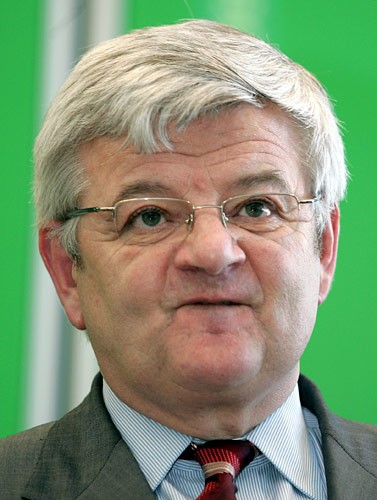
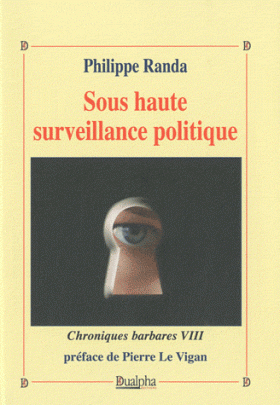 Comme adjectif, le mot « chronique » désigne quelque chose qui dure longtemps. Comme une maladie, ou comme l’avenir dont chacun sait, au moins depuis Althusser, qu’il dure longtemps puisque sous ce titre il publia un livre. Précisément, les chroniques de Philippe Randa, dont il nous livre le huitième volume, concernent une maladie durable. C’est celle de notre pays. Comment nommer ce mal ?
Comme adjectif, le mot « chronique » désigne quelque chose qui dure longtemps. Comme une maladie, ou comme l’avenir dont chacun sait, au moins depuis Althusser, qu’il dure longtemps puisque sous ce titre il publia un livre. Précisément, les chroniques de Philippe Randa, dont il nous livre le huitième volume, concernent une maladie durable. C’est celle de notre pays. Comment nommer ce mal ? 
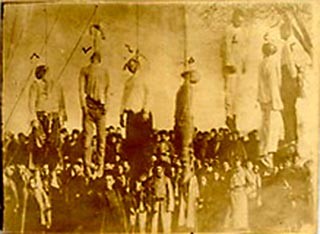 Con l’espressione “genocidio armeno” (in lingua armena Medz Yeghern, Grande Male) (1) ci si riferisce a due eventi distinti ma legati fra loro: il primo, quello relativo alla campagna contro gli armeni condotta negli anni 1894-1896 dal sultano Abdul Hamid II; il secondo, quello collegato alla deportazione ed eliminazione degli armeni compiute nel corso del Primo Conflitto Mondiale dal nuovo governo della Sublime Porta controllato dai Giovani Turchi. In questa sede ci limiteremo a ricostruire i fatti salienti di quest’ultima persecuzione, soprattutto in virtù delle sue peculiari finalità e metodologie e per il fatto che essa viene ancora negata o contestata – nonostante l’enorme mole di documenti e testimonianze – dall’attuale governo turco. Il sostanziale rifiuto da parte dell’attuale governo di Ankara di riconoscere le responsabilità storiche della Sublime Porta rappresenta non soltanto un chiaro esempio di ‘negazionismo’, ma anche un ingombrante ostacolo all’ingresso nel consesso europeo di questo Paese retto sì da un regime laico ma ancora fortemente permeato di religiosità e di esasperato e malinteso spirito nazionalista.
Con l’espressione “genocidio armeno” (in lingua armena Medz Yeghern, Grande Male) (1) ci si riferisce a due eventi distinti ma legati fra loro: il primo, quello relativo alla campagna contro gli armeni condotta negli anni 1894-1896 dal sultano Abdul Hamid II; il secondo, quello collegato alla deportazione ed eliminazione degli armeni compiute nel corso del Primo Conflitto Mondiale dal nuovo governo della Sublime Porta controllato dai Giovani Turchi. In questa sede ci limiteremo a ricostruire i fatti salienti di quest’ultima persecuzione, soprattutto in virtù delle sue peculiari finalità e metodologie e per il fatto che essa viene ancora negata o contestata – nonostante l’enorme mole di documenti e testimonianze – dall’attuale governo turco. Il sostanziale rifiuto da parte dell’attuale governo di Ankara di riconoscere le responsabilità storiche della Sublime Porta rappresenta non soltanto un chiaro esempio di ‘negazionismo’, ma anche un ingombrante ostacolo all’ingresso nel consesso europeo di questo Paese retto sì da un regime laico ma ancora fortemente permeato di religiosità e di esasperato e malinteso spirito nazionalista.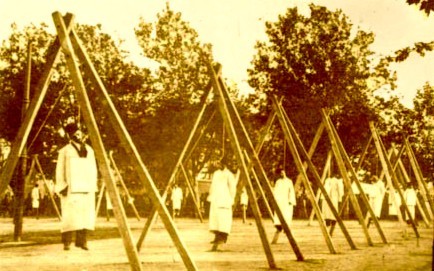 Va comunque detto che non tutti i governatori turchi accettarono di eseguire per filo e per segno gli ordini di Costantinopoli. Nel luglio 1915, ad esempio, il vali di Ankara si oppose allo sterminio indiscriminato di giovani e vecchi, venendo rimosso e sostituito da un funzionario più zelante, tale Gevdet, che nell’estate del ‘15 a Siirt fece massacrare oltre 10.000 tra armeni ortodossi, cristiani nestoriani, giacobini e greci del Ponto. Resoconti sui molteplici eccidi sono registrati anche nelle memorie di altri addetti diplomatici francesi, bulgari, svedesi e italiani (come il console di Trebisonda, Giovanni Gorrini) presenti all’epoca in Turchia. Nonostante tutto, il governo turco non si reputava ancora soddisfatto di come stava procedendo la risoluzione del “problema armeno”. “In base alle relazioni da noi raccolte – annotò il 10 e il 20 gennaio del 1916, il notabile Abdullahad Nouri Bey – mi risulta che soltanto il 10 per cento degli armeni soggetti a deportazione generale abbia raggiunto i luoghi ad essi destinati; il resto è morto di cause naturali, come fame e malattie. Vi informiamo che stiamo lavorando per avere lo stesso risultato riguardo quelli ancora vivi, indicando e utilizzando misure ancora più severe (…) Il numero settimanale dei morti non è ancora da considerarsi soddisfacente”. Nel 1916, Enver Pascià, Taalat Pascià e Ahmed Jemal diedero quindi un ulteriore giro di vite, intimando ai loro governatori e ai capi di polizia di “eliminare con le armi, ma se possibile con mezzi più economici, tutti i sopravvissuti dei campi siriani e anatolici”. In questa fase del massacro ebbe modo di distinguersi per efficienza il governatore del già citato distretto di Deir al-Azor, Zeki Bey, che – secondo quanto riportano James Bryce e Arnold Toynbee in The Treatment of Armenians in the Ottoman Empire, 1915–1916 – “rinchiuse 500 armeni all’interno di una stretta palizzata, costruita su una piana desertica, e li fece morire di fame e di sete”. Durante l’estate del 1916, gli uomini di Zeki eliminarono complessivamente oltre 20.000 armeni. A dimostrazione della criminale sfacciataggine dei leader turchi, basti pensare che Taalat Pascià arrivò a vantarsi dell’efficienza del suo governatore con l’ambasciatore americano Morgenthau, al quale egli ebbe anche il coraggio di chiedere “l’elenco delle polizze assicurazioni sulla vita che gli armeni più ricchi (deceduti nei campi di sterminio) avevano precedentemente stipulato con compagnie americane, in modo da consentire al governo di incassare gli utili delle polizze”. Altrettanto crudele ed anche beffardo risultò il destino delle comunità armene dell’Anatolia orientale che, grazie anche all’intervento dell’armata zarista, erano riuscite a trovare momentaneo rifugio nelle valli del Caucaso. In seguito alla rivoluzione bolscevica del 1917, l’esercito russo si era infatti ritirato dall’Anatolia orientale e dalla Ciscaucasia, abbandonando gli armeni al loro destino. Rioccupata l’importante città-fortezza di Kars, le forze ottomane iniziarono una vera e propria caccia all’uomo, eliminando circa 19.000 cristiani. Identica sorte toccò a quei profughi armeni che, rifugiatisi in Azerbaigian, furono massacrati dalle locali minoranze mussulmane tartare e cecene che, nel 1918, nella sola area di Baku, ne eliminarono 30.000.
Va comunque detto che non tutti i governatori turchi accettarono di eseguire per filo e per segno gli ordini di Costantinopoli. Nel luglio 1915, ad esempio, il vali di Ankara si oppose allo sterminio indiscriminato di giovani e vecchi, venendo rimosso e sostituito da un funzionario più zelante, tale Gevdet, che nell’estate del ‘15 a Siirt fece massacrare oltre 10.000 tra armeni ortodossi, cristiani nestoriani, giacobini e greci del Ponto. Resoconti sui molteplici eccidi sono registrati anche nelle memorie di altri addetti diplomatici francesi, bulgari, svedesi e italiani (come il console di Trebisonda, Giovanni Gorrini) presenti all’epoca in Turchia. Nonostante tutto, il governo turco non si reputava ancora soddisfatto di come stava procedendo la risoluzione del “problema armeno”. “In base alle relazioni da noi raccolte – annotò il 10 e il 20 gennaio del 1916, il notabile Abdullahad Nouri Bey – mi risulta che soltanto il 10 per cento degli armeni soggetti a deportazione generale abbia raggiunto i luoghi ad essi destinati; il resto è morto di cause naturali, come fame e malattie. Vi informiamo che stiamo lavorando per avere lo stesso risultato riguardo quelli ancora vivi, indicando e utilizzando misure ancora più severe (…) Il numero settimanale dei morti non è ancora da considerarsi soddisfacente”. Nel 1916, Enver Pascià, Taalat Pascià e Ahmed Jemal diedero quindi un ulteriore giro di vite, intimando ai loro governatori e ai capi di polizia di “eliminare con le armi, ma se possibile con mezzi più economici, tutti i sopravvissuti dei campi siriani e anatolici”. In questa fase del massacro ebbe modo di distinguersi per efficienza il governatore del già citato distretto di Deir al-Azor, Zeki Bey, che – secondo quanto riportano James Bryce e Arnold Toynbee in The Treatment of Armenians in the Ottoman Empire, 1915–1916 – “rinchiuse 500 armeni all’interno di una stretta palizzata, costruita su una piana desertica, e li fece morire di fame e di sete”. Durante l’estate del 1916, gli uomini di Zeki eliminarono complessivamente oltre 20.000 armeni. A dimostrazione della criminale sfacciataggine dei leader turchi, basti pensare che Taalat Pascià arrivò a vantarsi dell’efficienza del suo governatore con l’ambasciatore americano Morgenthau, al quale egli ebbe anche il coraggio di chiedere “l’elenco delle polizze assicurazioni sulla vita che gli armeni più ricchi (deceduti nei campi di sterminio) avevano precedentemente stipulato con compagnie americane, in modo da consentire al governo di incassare gli utili delle polizze”. Altrettanto crudele ed anche beffardo risultò il destino delle comunità armene dell’Anatolia orientale che, grazie anche all’intervento dell’armata zarista, erano riuscite a trovare momentaneo rifugio nelle valli del Caucaso. In seguito alla rivoluzione bolscevica del 1917, l’esercito russo si era infatti ritirato dall’Anatolia orientale e dalla Ciscaucasia, abbandonando gli armeni al loro destino. Rioccupata l’importante città-fortezza di Kars, le forze ottomane iniziarono una vera e propria caccia all’uomo, eliminando circa 19.000 cristiani. Identica sorte toccò a quei profughi armeni che, rifugiatisi in Azerbaigian, furono massacrati dalle locali minoranze mussulmane tartare e cecene che, nel 1918, nella sola area di Baku, ne eliminarono 30.000. [1]
[1].jpg)

 La diabolisation de Kadhafi dans la presse putassière occidentale repose sur une sorte de mot d’ordre : « Il faut mélanger un peu de vérité avec un bon paquet de mensonges ». Les Russes ont à nouveau eu beau jeu d’accuser la presse occidentale de mensonge après que celle-ci ait annoncé que l’aviation du Colonel Kadhafi bombardait la population civile du pays. Il n’est toutefois pas bien difficile de conclure que la soi-disant « révolution libyenne », dans son ensemble, a été organisée et orchestrée par les bellicistes globaux, siégeant à Londres.
La diabolisation de Kadhafi dans la presse putassière occidentale repose sur une sorte de mot d’ordre : « Il faut mélanger un peu de vérité avec un bon paquet de mensonges ». Les Russes ont à nouveau eu beau jeu d’accuser la presse occidentale de mensonge après que celle-ci ait annoncé que l’aviation du Colonel Kadhafi bombardait la population civile du pays. Il n’est toutefois pas bien difficile de conclure que la soi-disant « révolution libyenne », dans son ensemble, a été organisée et orchestrée par les bellicistes globaux, siégeant à Londres. 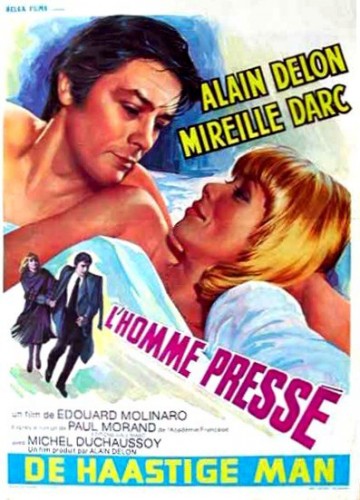
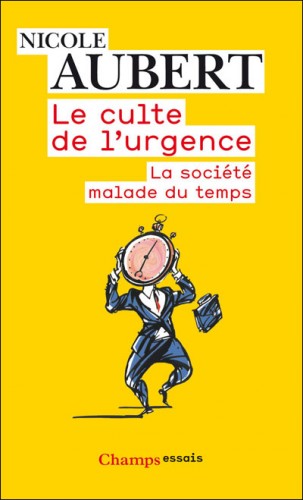 Elle nous fait bouger de plus en plus vite, ou surtout, elle nous fait croire que ce qui est bien c’est de bouger de plus et plus, et de plus en plus vite. En cherchant à aller de plus en plus vite, et à faire les choses de plus en rapidement, l’homme prend le risque de se perdre de vue lui-même. Goethe écrivait : « L’homme tel que nous le connaissons et dans la mesure où il utilise normalement le pouvoir de ses sens est l’instrument physique le plus précis qu’il y ait au monde. Le plus grand péril de la physique moderne est précisément d’avoir séparé l’homme de ses expériences en poursuivant la nature dans un domaine où celle-ci n’est plus perceptible que par nos instruments artificiels. »
Elle nous fait bouger de plus en plus vite, ou surtout, elle nous fait croire que ce qui est bien c’est de bouger de plus et plus, et de plus en plus vite. En cherchant à aller de plus en plus vite, et à faire les choses de plus en rapidement, l’homme prend le risque de se perdre de vue lui-même. Goethe écrivait : « L’homme tel que nous le connaissons et dans la mesure où il utilise normalement le pouvoir de ses sens est l’instrument physique le plus précis qu’il y ait au monde. Le plus grand péril de la physique moderne est précisément d’avoir séparé l’homme de ses expériences en poursuivant la nature dans un domaine où celle-ci n’est plus perceptible que par nos instruments artificiels. »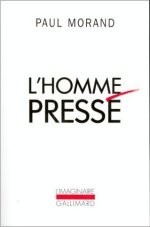 Hartmut Rosa montre que la désynchronisation des évolutions socio-économiques et la dissolution de l’action politique font peser une grave menace sur la possibilité même du progrès social. Déjà Marx et Engels affirmaient ainsi que le capitalisme contient intrinsèquement une tendance à « dissiper tout ce qui est stable et stagne ». Dans Accélération, Hartmut Rosa prend toute la mesure de cette analyse pour construire une véritable « critique sociale du temps susceptible de penser ensemble les transformations du temps, les changements sociaux et le devenir de l’individu et de son rapport au monde ».
Hartmut Rosa montre que la désynchronisation des évolutions socio-économiques et la dissolution de l’action politique font peser une grave menace sur la possibilité même du progrès social. Déjà Marx et Engels affirmaient ainsi que le capitalisme contient intrinsèquement une tendance à « dissiper tout ce qui est stable et stagne ». Dans Accélération, Hartmut Rosa prend toute la mesure de cette analyse pour construire une véritable « critique sociale du temps susceptible de penser ensemble les transformations du temps, les changements sociaux et le devenir de l’individu et de son rapport au monde ».
 Eva Maria Ibarguren nacque il 7 maggio 1919 a Los Toldos, ultima di cinque figli illegittimi (Elisa, Blanca, Juan Ramòn, Erminda ed Eva) di, Juana Ibarguren, figlia di un carrettiere basco, e di un fattore di Chivilcoy (cittadina situata trecento chilometri a ovest di Buenos Aires), Juan Duarte. Eva scoprì con sofferta stupefazione la prima grande umiliazione della sua vita a sette anni. Quando, nel 1926, il padre (ormai vedovo, la moglie legittima, Estela Grisolia, era morta nel 1922) morì in un incidente d’auto e la famiglia legittima volle impedire a Juana e ai suoi figli di seguire il corteo funebre. Eva scriverà nella Razòn de mi vida: “Ho scoperto nel mio cuore un sentimento fondamentale che mi domina completamente lo spirito e la volontà: questo sentimento è l’indignazione dinanzi all’ingiustizia”.
Eva Maria Ibarguren nacque il 7 maggio 1919 a Los Toldos, ultima di cinque figli illegittimi (Elisa, Blanca, Juan Ramòn, Erminda ed Eva) di, Juana Ibarguren, figlia di un carrettiere basco, e di un fattore di Chivilcoy (cittadina situata trecento chilometri a ovest di Buenos Aires), Juan Duarte. Eva scoprì con sofferta stupefazione la prima grande umiliazione della sua vita a sette anni. Quando, nel 1926, il padre (ormai vedovo, la moglie legittima, Estela Grisolia, era morta nel 1922) morì in un incidente d’auto e la famiglia legittima volle impedire a Juana e ai suoi figli di seguire il corteo funebre. Eva scriverà nella Razòn de mi vida: “Ho scoperto nel mio cuore un sentimento fondamentale che mi domina completamente lo spirito e la volontà: questo sentimento è l’indignazione dinanzi all’ingiustizia”.


 S’agissant de la Suisse, la Cour européenne des droits de l’homme a été saisie par un recours de
S’agissant de la Suisse, la Cour européenne des droits de l’homme a été saisie par un recours de  4
4
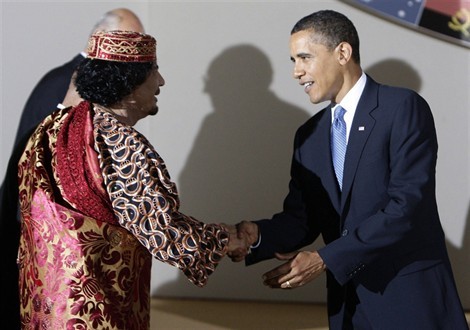
 En France, on a des idées et, en plus, on a du schiste bitumineux
En France, on a des idées et, en plus, on a du schiste bitumineux 









